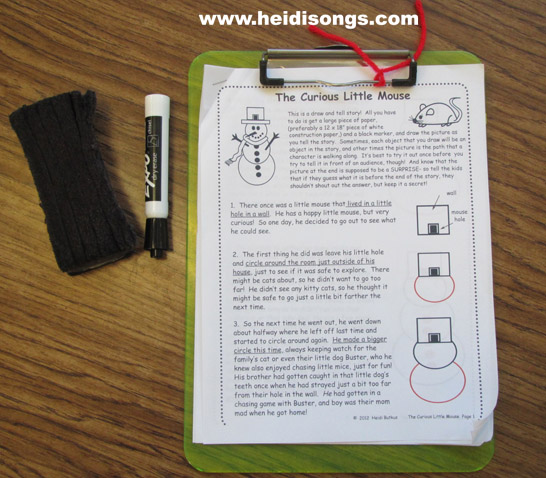The Letter Reversal Mystery and Solutions
Have you heard the news? We've Moved to HeidiSongs.tv!
Our new website features an online video streaming service, updated blog posts at Heidisongs.blog, and a wealth of fresh resources designed to make learning even more fun and engaging.
You can also continue shopping for our educational products there and at our Teachers Pay Teachers store!
Head over to HeidiSongs.tv now and explore all the exciting new features.
See you there!
__________________________________________________________________________
We've all seen it: kids that struggle with letter reversals. Maybe it's switching d's and b's, maybe it's the infamous backward S. As teachers, we have all encountered letter reversals in the classroom, and wondered what to do about it. Helping students fix their reversals requires understanding why they happen and exploring associated appropriate ways of helping them correct it. I'm happy to write about this today!
First, we must understand that properly writing letters requires an appropriate physical (motor) action, coupled with a solid internal visual image of the letter or number to be written.
For very young children, reversals are normal up to and through approximately the age of 5. At these young ages, children are still developing their ability to effectively move their muscles and body to successfully accomplish a task or activity. Even at age five, some reversals are still common, and implementing motor movement activities that strengthen directionality can help emphasize correct letter formation. When children can’t recognize a letter, number, or symbol: they may have trouble differentiating between similar letters like b & d, p & q, o & a, and m & w. Our brains register how we “see” (or visually perceive) a letter which plays a role in the grasp of the form of a letter. Problems with visual perception can lead to reversals of letters and numbers because the child isn’t able to interpret the direction of the letter.
The understanding of left and right also plays a role. When a lack of awareness of left and right is in play, children can have difficulty with forming a letter (how the letter flows, the awareness of where to begin and end a letter or the direction of a letter). Some research suggests that how children plan the movement of their fingers to form letters, how they use their vision and the messages their movements send to their brains are more closely related to handwriting than how their brains process what they see on the page. In other words, different forms of movement are important in letter practice!
So let's work on it all! Now that we've got a basic understanding of what's required for success in correctly writing letters, we can explore some of the ways that these skills can be strengthened.
The traditional approach to addressing reversals is usually via worksheets and repetitive writing practice only. Worksheets can be a great tool practice and for evaluating a student's progress, but, for students who are struggling, more is needed. The child needs is to physically experience the letter in a kinesthetic, sensory way. The essence of writing is the ability to feel the motion, flow, and movement of the letters. When learning to write we must first rely on our vision, but when we're writing efficiently, we aren't looking at what we're doing—we're feeling it! So we need to change the pathways in the brain by connecting the movement of the hand and fingers to the brain.
Once that process has been undertaken and practiced, writing on paper to practice letter strokes makes sense. Worksheets, then, can be used both for practice and to evaluate progress.
Directionality, one aspect of learning proper letter form, is first learned and solidified through whole body movement. Practicing whole body activities that emphasize using both the left and right sides of the body and crossing the midline, or vertical center, of the body will help the brain remember the pathways. Confusion with directionality may be an indication that one’s visual memory is weak. This means the student can’t remember the form long enough to duplicate it, or they can’t “see” it in its full form in order to duplicate it.
HERE’S WHAT YOU CAN DO TO HELP!
ACTIVITIES TO REINFORCE PROPER LETTER FORM
There are various ways to approach letter reversals, but any activity that focuses on the deep motor systems and helps strengthen directionality, visual and/or motor perception, and the like are a good bet. The good news is that kinesthetic, multi-sensory activities are not only beneficial but also fun for kids! Toys that require the user to move an object out of eye view (with a magnet underneath) emphasize this brain connection without feeling like hard work to the child. Remember the old car tracks that had the child move the car along the road from underneath? That toy was great for brain and motor development. I've developed a set of educational toys that use this same principle to reinforce proper letter formation in a fun way: Magnetic Tracer Sets.
1. Magnetic Tracing
The magnetic tracer is a fun way to emphasize the connection needed between the brain’s interpretation of the direction of movement, and the actual movement of the hand. Kids only think of having fun, not the challenge of writing a letter in the correct direction or form.
Take a look at this video of the tracer set in action:
They're teaching themselves the correct flow and movement of the letter, and their eyes are following along creating even more physical pathways. You will often see little kids following along with their heads and tongues so they are really experiencing the letter function! The idea is that when we do activities that access many different parts of the brain, there's a stronger message being sent to the brain.
2. Rope Walking
Another way to emphasize the proper form of letters and to assist with correcting reversals is to do larger motor movements. So for instance, one of my other favorite exercises, from my CLIME® Manual, is to have students make large letters on the ground out of rope, then have them walk on the letter, following the proper flow and stroke.
3. Clay Snake and Wikki Stix® Letters
It’s also fun for the students to form letters with clay “snakes” or Wikki Stix®. The brain is more engaged when manipulating different mediums to create a letter or concept! They don’t even realize they are learning!!
Children develop and strengthen their eye-hand coordination by throwing and catching using lightweight balls, balloons or beach balls which are fun and non-threatening.
Two traditional and still effective ways to force the brain to engage with proper letter formation is making letters in the air with their arms or having someone draw letters on the student's back. Do you remember, when you were young, having a friend write something on your back and trying to figure out what they'd written? It forces your brain to engage with the letters differently, and can be helpful for students struggling to overcome reversals.
I hope you will try these varied and enjoyable motor activities with your students. You will see them engage and bring joy to writing and correcting reversals. So what may have been frustrating becomes a fun game and can lead to success on paper!
I wish you much success. Let me know how these strategies work for you and please forward any questions. I’d love to hear from you.
Have a wonderful, Brain-Engaging™ day!
Cindy
cindy@educlime.com
www.educlime.com
Glossary
Fine Motor- coordination of movement of the hands and fingers (small motor muscles) with the eyes
Kinesthetic/Kinesthesia-the sensation or information provided to the muscles for movement; kinesthetic activities involve using the muscles and movement to process information
Perceptual Motor- Using one’s senses/sensations and motor skills to interact with and experience one’s environment.
Visual Discrimination- The ability to see and identify the differences between different visual images (letters, shapes, numbers, forms)
Visual Motor- Controlling one’s hand movement with vision
Visual Spatial- The process of visually understanding where objects are in relation to other objects. Many refer to understanding “where objects are in space”, knowing where you are in relation to another, knowing where one part of a letter or word is in relation to the next part or word.
References
Kaval, K. (1982). Meta-analysis of the relationship between visual perceptual skills and reading achievement. Journal of Learning Disabilities, 15, 42-51.
Raymond, J/E/ & Sorensen, R.E. (1998) Visual motion perception in children with dyslexia: Normal detection but abnormal integration. Visual Cognition, 5, 389-404.
Case-Smith, J. (2005) Occupational Therapy for Children Fifth Edition, St. Louis, MO: Elsevier Inc.
About Cindy Pahr
Cindy developed a motor skills program, The CLIME® Program, and Living Letters® Handwriting Program. These program were created as an outgrowth from her many workshops. The teachers wanted tools in their hands to implement the strategies Cindy taught!
Combining her extensive knowledge of physical challenges, brain injury and learning disabilities with her love of education, Cindy’s charge is to improve the lives of children. Her training encompasses a comprehensive approach including the cognitive, medical, physical, psychological and educational aspects of teaching. She has experience serving students in all grades with specific experience in teaching Kindergarten, second grade third grade and high school.
Ms. Pahr frequently speaks to school district leaders, teachers, parent groups and is an invited speaker at state and national conferences.
----------------------------------
I hope you enjoyed this guest post, and thank you again, Cindy!
- Heidi
----------------------------------
Follow me! Did you enjoy this post? Do me a favor and share it with your friends! And follow this blog by signing up for my email updates here, or follow on Bloglovin', or follow me on TPT! I'm also on Pinterest, Facebook, Twitter, Instagram, Google+ and YouTube, too! Don't forget to sign up for our email newsletter for special deals and promo codes that you won't find out about anywhere else.


















